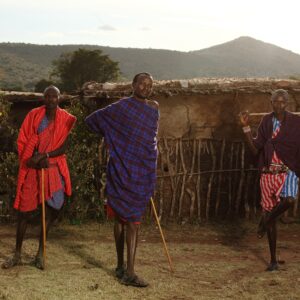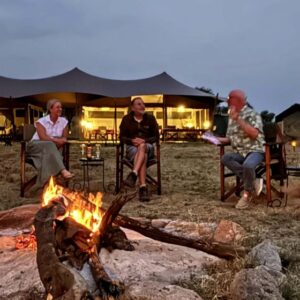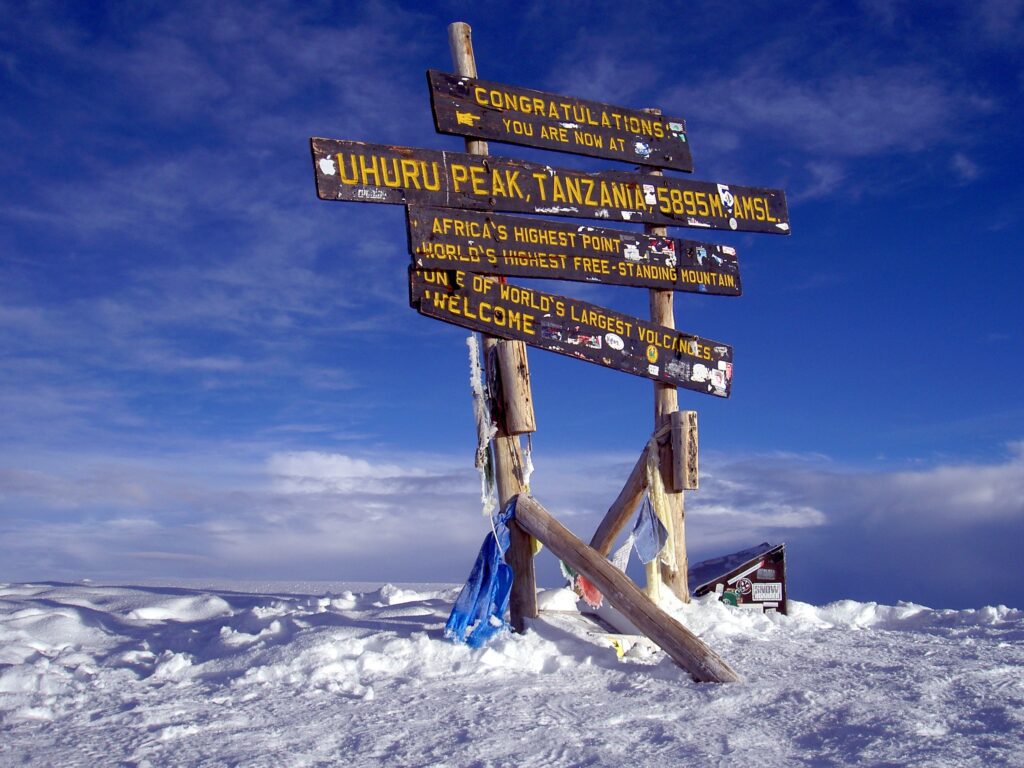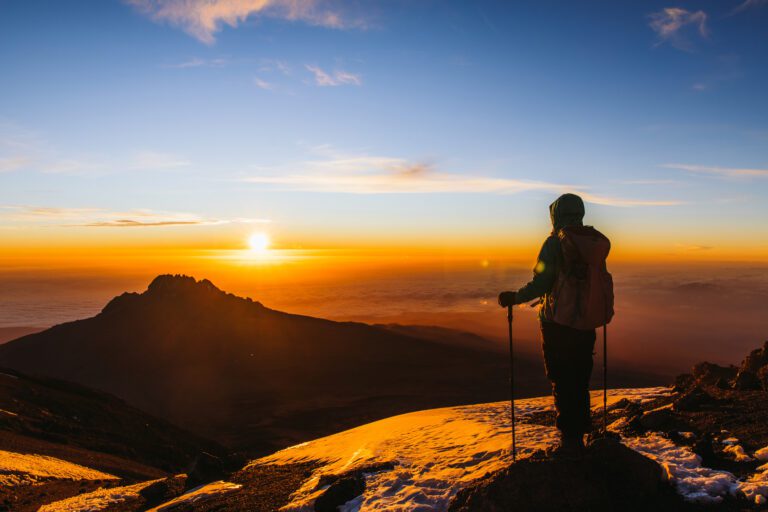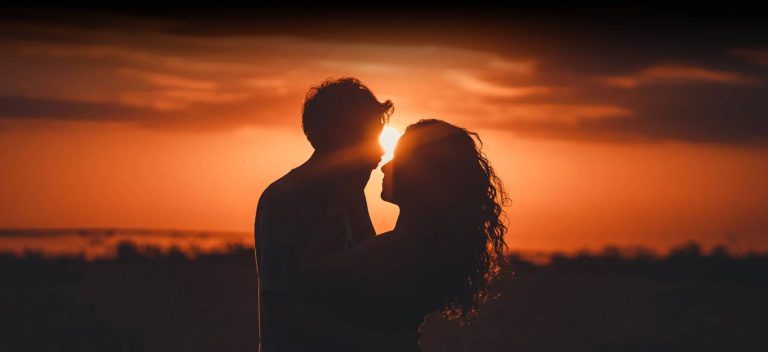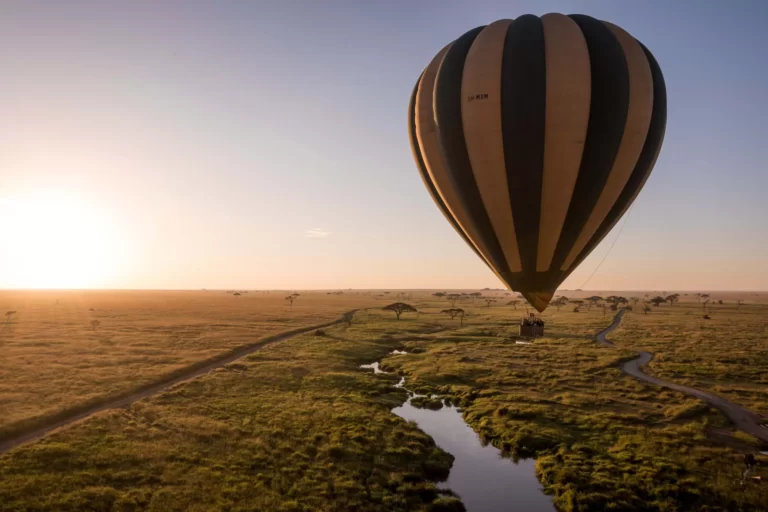How Hard is Summit Night on Kilimanjaro?
Mount Kilimanjaro, the highest peak in Africa, offers an unparalleled adventure for those willing to face its challenges. Among these, summit night stands out as the most daunting part of the journey. To fully understand the complexities and difficulties of summit night, we must delve into the various factors that contribute to its notorious reputation. Summit night is by far the hardest part of a Kilimanjaro trek. Not only do you set out at midnight in the freezing cold, but you hike for around 13 to 16 hours! We describe the challenge in more detail, as well as advise you on how to prepare.
Summit night on Kilimanjaro typically begins around midnight, a strategic choice aimed at reaching the summit by dawn. This schedule allows climbers to witness a breathtaking sunrise over the African plains, making the grueling trek worthwhile. However, the challenges faced during these hours are numerous and demanding.
What is summit night?
One of the primary challenges of summit night is the high altitude. The summit of Kilimanjaro, Uhuru Peak, set out from base camp stands at 5,895 meters (19,341 feet) above sea level. At such elevations, the air is significantly thinner, resulting in lower oxygen levels. Climbers often experience symptoms of altitude sickness, such as headaches, nausea, and dizziness. Proper acclimatization is crucial to mitigate these effects, and many climbers spend several days on the mountain to allow their bodies to adjust to the altitude.
Physical and Mental Endurance
The physical demands of summit night cannot be overstated. The ascent from the final camp to the summit involves a steep, relentless climb that tests one’s physical endurance. The terrain is rocky and uneven, with loose scree making each step a challenge. Climbers need to be in excellent physical condition to tackle this part of the journey. Equally important is mental endurance. The climb is long, typically taking 6-8 hours to reach the summit, followed by a descent that can take another 6-8 hours. The mental fortitude required to keep going despite exhaustion and harsh conditions is immense.
Weather Conditions
Weather conditions on Kilimanjaro can be unpredictable and harsh, particularly during summit night. Temperatures often drop well below freezing, with the wind chill making it feel even colder. Climbers must be prepared with appropriate gear, including insulated clothing, gloves, and hats. Additionally, the altitude can cause the weather to change rapidly, with clear skies turning into snowstorms in a matter of hours. This unpredictability adds another layer of difficulty to the climb.
Technical Aspects of the Climb
While Kilimanjaro is considered a non-technical climb, summit night does present some technical challenges. The route from the final camp to the summit involves navigating through sections of loose scree and large boulders. In some areas, climbers may need to scramble on all fours to maintain their balance. The darkness adds to the complexity, with headlamps being the primary source of light. This requires climbers to be vigilant and cautious with each step.
What Makes Summit Night So Challenging?
How Hard Is Summit Night? Summit night is widely regarded as the most difficult part of the Kilimanjaro climb due to several factors: Despite these challenges, with proper preparation and a strong mindset, many climbers succeed in reaching the summit.
Altitude and Oxygen Levels: As you ascend Kilimanjaro, the thinning air becomes one of the most significant obstacles. By the time you begin summit night, typically at 4,600 meters (15,091 feet) above sea level, the oxygen level is roughly 50% of what it is at sea level. This decrease can lead to symptoms of altitude sickness, including headaches, dizziness, and nausea, which can impact your ability to keep moving forward.
Extreme Weather Conditions: Temperatures on summit night can plummet to -20°C (-4°F) or lower, especially when factoring in wind chill. These harsh conditions necessitate specialized gear, including insulated jackets, thermal layers, gloves, and hats, to protect against frostbite and hypothermia. The biting cold, combined with strong winds, tests your physical and mental fortitude.
Steep Terrain and Loose Scree: The route to the summit is steep, often with loose volcanic scree underfoot. This makes maintaining balance and traction a persistent challenge. Each step can feel like two as your boots slide backward, demanding careful pacing and a strong core.
Darkness: Navigating rocky trails and loose scree in the dark adds to the difficulty.
Fatigue: After several days of trekking and sleeping in tents, your body is already tired.
Kilimanjaro Summit Night Clothing
Summit night on Kilimanjaro demands layered clothing to combat extreme cold. Begin with moisture-wicking thermal base layers to stay dry, followed by insulated mid-layers like fleece for warmth. A down jacket provides essential insulation, while a windproof, waterproof shell protects against icy winds. Thermal gloves, a balaclava or beanie, and insulated boots with wool socks shield extremities from frostbite. Gaiters and hand warmers offer added protection, ensuring climbers remain comfortable and safe during the arduous ascent.
Here are the reasons why summit night on Kilimanjaro is so challenging:
- It’s extremely cold.
- The wind can be fierce, especially at the summit where there’s no shelter from it.
- Starting the trek in the middle of the night can be mentally daunting.
- You’re trekking on minimal and likely poor-quality sleep.
- It’s the steepest part of the entire trek.
- The scree can be difficult to navigate.
- You hike for around 13 to 16 hours, depending on your route and fitness level.
- The air is very thin, making breathing difficult.
- The extreme altitude can cause symptoms like dizziness and nausea.
How can I prepare for Summit Night?
To successfully tackle summit night on Kilimanjaro, thorough preparation and training are essential. Here are some key aspects to focus on how can I prepare for summit night?:
Physical Training: Climbers should embark on a comprehensive physical training regimen several months before the climb. This should include aerobic exercises like running and cycling to build cardiovascular endurance, as well as strength training to enhance muscular endurance. Specific focus should be on leg muscles, as they will bear the brunt of the climb. Additionally, hiking on varied terrain with a weighted backpack can simulate the conditions on Kilimanjaro and help build stamina.
Mental Preparation: Mental preparation is equally important. Climbers should practice techniques to manage stress and maintain focus, such as mindfulness and visualization. Understanding the challenges ahead and preparing mentally to face them can make a significant difference on summit night. It is also beneficial to read accounts from past climbers to gain insights into the mental resilience required.
Gear and Equipment: Having the right gear is crucial for a successful summit. Essential items include a high-quality sleeping bag, insulated and waterproof clothing, sturdy hiking boots, gloves, hats, and headlamps with extra batteries. Layering is important to manage varying temperatures. Trekking poles can also provide additional support and stability during the ascent and descent.
Acclimatization Strategies: Proper acclimatization strategies can significantly reduce the risk of altitude sickness. This includes spending multiple days on the mountain, following the “climb high, sleep low” principle, and staying well-hydrated. Some climbers also use medications such as Diamox to help with acclimatization, but this should be done under medical supervision.
The Emotional and Psychological Impact: Summit night is not just a physical challenge but also an emotional and psychological journey. The sense of camaraderie among climbers, the encouragement from guides, and the personal determination to reach the summit create a unique experience. Overcoming the difficulties of summit night often leads to a profound sense of achievement and self-discovery.
The Role of Guides and Support Team: Experienced guides play a vital role in the success of summit night. They provide not only logistical support but also moral encouragement. Their knowledge of the mountain, ability to navigate the route, and expertise in handling emergencies are invaluable. The support team, including porters and cooks, also contribute significantly by ensuring that climbers are well-fed, hydrated, and rested.
The Reward of Reaching Uhuru Peak: Despite the hardships, the moment of reaching Uhuru Peak is indescribable. The panoramic views, the sense of standing on the highest point in Africa, and the culmination of months of preparation and effort make it all worthwhile. Many climbers describe this moment as life-changing, bringing a profound sense of accomplishment and joy. At the summit, Uhuru Point, the night time temperatures can range between 20 and -20 degrees Fahrenheit (-7 to -29 degrees Celsius). Due to Mount Kilimanjaro’s great height, the mountain creates it’s own weather.
The Final Push to Uhuru Peak
Reaching Stella Point, the first milestone on the crater rim, is an emotional victory, but the journey is not over. From here, it takes another 45 minutes to 1.5 hours to reach Uhuru Peak, the true summit of Mount Kilimanjaro. The final stretch tests every ounce of your strength but rewards you with breathtaking views and an overwhelming sense of accomplishment.
Highlights of Kilimanjaro Summit Climb
Reaching the Kilimanjaro summit is a life-changing adventure. Experience breathtaking landscapes, from lush rainforests to alpine deserts, before conquering Uhuru Peak, Africa’s highest point. Witness awe-inspiring sunrises above the clouds, connect with diverse wildlife, and embrace the camaraderie of climbers and guides. The journey tests resilience but rewards with unmatched vistas and a profound sense of accomplishment. Perfect for adventurers seeking both physical challenge and emotional fulfillment, this iconic climb is an unforgettable bucket-list achievement.
Why summit Kilimanjaro at night?
Climbing Kilimanjaro at night offers several advantages, including better trail conditions, higher margins of safety, and more spectacular views. We realize that a night ascent can be challenging, due to the darkness, the cold and the wind. But the pros definitely outweigh the cons.
How Difficult Is Summit Night on Kilimanjaro?
The difficulty lies in the combination of steep inclines, extreme cold, and reduced oxygen levels. However, determination, preparation, and support from guides make the challenge manageable for most climbers.
How Cold Is Summit Night on Kilimanjaro?
Temperatures often range from -7°C (20°F) to -20°C (-4°F) depending on the season, altitude, and wind conditions. Layers and high-quality gear are essential.
Is It Hard to Breathe at the Top of Kilimanjaro?
Yes, the reduced oxygen levels (about 50% compared to sea level) make breathing more difficult. Symptoms of altitude sickness, such as shortness of breath and dizziness, are common. Acclimatization is key to mitigating these effects.
Why Do People Climb Kilimanjaro at Night?
The nighttime climb ensures you reach the summit at sunrise, providing a stunning reward for your effort. Additionally, the scree slope is easier to navigate when it’s frozen, reducing the risk of slipping.
Is There Snow on Kilimanjaro Summit?
Yes, Kilimanjaro’s summit is often covered in snow and ice, especially during the wet seasons. The glaciers near the summit add to its breathtaking beauty.
How Long Would You Be Spending at the Summit?
Most climbers spend 15-30 minutes at the summit to take photos and soak in the views. Prolonged exposure to high altitudes can be dangerous.
The Best Route for Kilimanjaro Summit Hike
The best route for summiting Kilimanjaro is the Machame Route, also known as the “Whiskey Route.” It offers stunning scenery, a gradual ascent for better acclimatization, and a high success rate. Spanning 6–7 days, it traverses diverse landscapes, from lush rainforests to alpine deserts. Though challenging, it’s ideal for adventure-seekers aiming for Uhuru Peak. The route’s scenic beauty and strategic acclimatization make it the top choice for a rewarding Kilimanjaro hike. The most popular routes includes.
How Long Is Summit Night on Kilimanjaro?
The ascent to the summit typically takes 6-8 hours, depending on your pace and route. The descent back to the base camp takes an additional 3-4 hours, making summit night a grueling 9-12 hour endeavor.
What Is the Daily Schedule on Kilimanjaro?
A typical day on Kilimanjaro involves:
Morning: Early wake-up, breakfast, and packing.
Trekking: 4-7 hours of hiking, including lunch breaks.
Afternoon: Arrival at camp, rest, and acclimatization.
Evening: Dinner and early bedtime to prepare for the next day.
On summit night, the schedule shifts dramatically with a midnight start.
Summit Day Kilimanjaro Itinerary
A typical summit night itinerary looks like this:
11:00 PM: Wake up and have a light snack.
12:00 AM: Begin the ascent with headlamps lighting the way.
6:00-7:00 AM: Reach Uhuru Peak for sunrise.
7:30-8:30 AM: Begin descent back to base camp.
12:00-1:00 PM: Rest and recover at camp.
Kilimanjaro Summit Night Bid by Day or Night
While most climbers attempt the summit at night, daytime bids are possible but less common. Night climbs offer cooler conditions and the magical experience of a sunrise summit.
Summit night on Kilimanjaro is undeniably tough, but it’s also a life-changing achievement. With proper preparation, determination, and support, you’ll find yourself standing on the Roof of Africa, celebrating your incredible journey.
What Summiting Mount Kilimanjaro Taught Me About Overcoming Fear?
Summiting Mount Kilimanjaro can teach you that you are more capable than you think you are, and that you can build resilience to adversity by facing your fears. Here are some other lessons you can learn from climbing Kilimanjaro:
Practice fearlessness: Consistently practicing fearlessness in one area of your life can make it easier to be fearless in other areas.
Stretch your boundaries: You need to stretch your boundaries, face your fears, and become uncomfortable in order to see that you are capable of more than you think.
Feel strong and humble: When you reach the summit, you can feel strong and humble, confident in your ability to do hard things and in awe of the effort required.
Conclusion: How hard is summit night on Kilimanjaro?
Summit night on Kilimanjaro is a formidable challenge that requires thorough preparation, physical and mental endurance, and the right support. The combination of high altitude, harsh weather conditions, and demanding terrain makes it one of the most difficult aspects of the climb. However, with proper training, acclimatization, and determination, it is an achievable goal that offers unparalleled rewards. The journey to the summit is a testament to human resilience and the spirit of adventure, leaving climbers with memories and experiences that last a lifetime.


